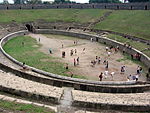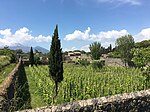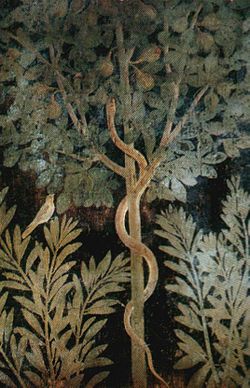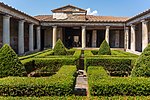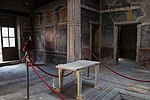House of Julia Felix
Houses of Pompeii

The House of Julia Felix, also referred to as the praedia (Latin for an estate, or land) of Julia Felix, is a large Roman property on the Via dell'Abbondanza in the city of Pompeii. It was originally the residence of Julia Felix, who converted portions of it to apartments available for rent and other parts for public use after the major earthquake in 62 AD, a precursor to the eruption of Mount Vesuvius in 79 AD that destroyed Pompeii. Archaeological excavations began in 1755 and the remains of the House of Julia Felix can be visited today.
Excerpt from the Wikipedia article House of Julia Felix (License: CC BY-SA 3.0, Authors, Images).House of Julia Felix
Viale Giuseppe Mazzini,
Geographical coordinates (GPS) Address Nearby Places Show on map
Geographical coordinates (GPS)
| Latitude | Longitude |
|---|---|
| N 40.751872222222 ° | E 14.493288888889 ° |
Address
Scavi archeologici di Pompei
Viale Giuseppe Mazzini
80045
Campania, Italy
Open on Google Maps

